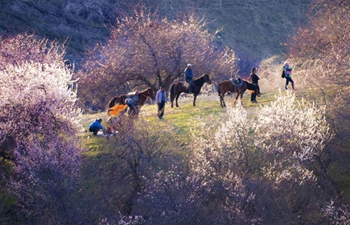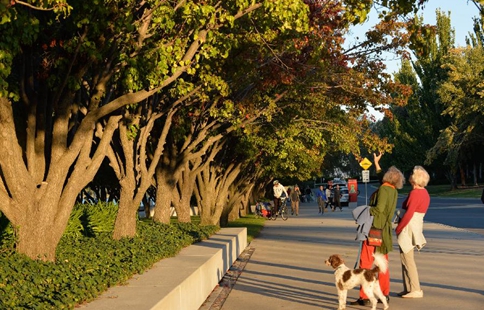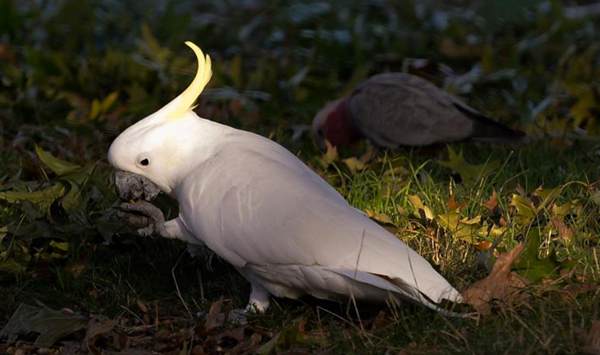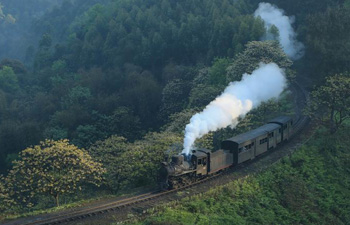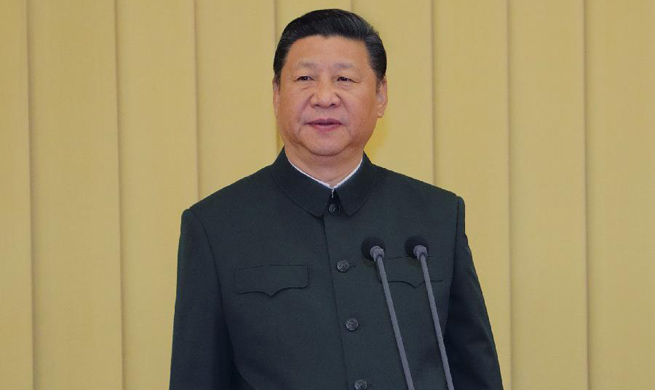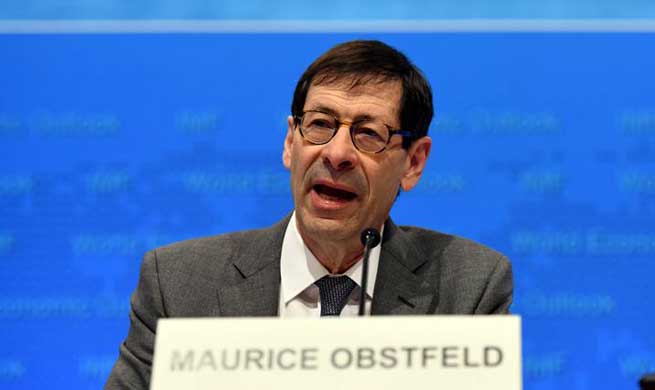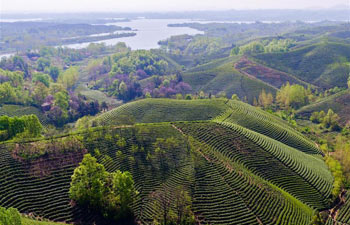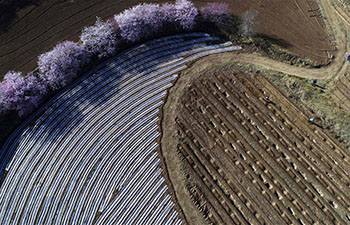SAN FRANCISCO, April 18 (Xinhua) -- New video captured by researchers at Oregon State University (OSU) shows just how blue whales pick and choose their meals.
The whales are so massive, sometimes growing to the length of three school buses, that they must carefully balance the energy gained through their food intake with the energetic costs of feeding.
"The whale bypasses certain krill patches, presumably because the nutritional payoff isn't sufficient, and targets other krill patches that are more lucrative," said Leigh Torres, a principal investigator with the Marine Mammal Institute at OSU, who led the expedition studying the blue whales.
Captured in the Southern Ocean off New Zealand using small drones, the video shows a blue whale cruising toward a large mass of krill, roughly the size of the whale itself.
The animal then turns on its side, orients toward the beginning of the krill swarm, and proceeds along its axis through the entire patch, devouring nearly the entire krill mass.
"Modeling studies of blue whales 'lunge-feeding' theorize that they will not put energy into feeding on low-reward prey patches," said Torres. "Our footage shows this theory in action. We can see the whale making choices, which is really extraordinary because aerial observations of blue whales feeding on krill are rare ... We think this is because blue whales are so big, and stopping to lunge-feed and then speeding up again is so energy-intensive, that they try to maximize their effort."
In another vignette, the same whale approaches a smaller mass of krill, which lies more perpendicular to its approach, and blasts through it without feeding.
"We had theorized that blue whales make choices like this and the video makes it clear that they do use such a strategy," Torres was quoted as explaining in a news release. "It certainly appears that the whale determined that amount of krill to be gained, and the effort it would take to consume the meal wasn't worth the effort of slowing down."
The researchers analyzed the whale's lunge-feeding and found that it approached the krill patch at about 10.8 kilometers, or 6.7 miles, per hour.
The act of opening its enormous mouth to feed slowed the whale down to nearly 1.8 kph, or 1.1 mph, and getting that big body back up to cruising speed again requires a lot of energy.
"It would be like me driving a car and braking every 100 yards, then accelerating again. Whales need to be choosy about when to apply the brakes to feed on a patch of krill," said Torres.




